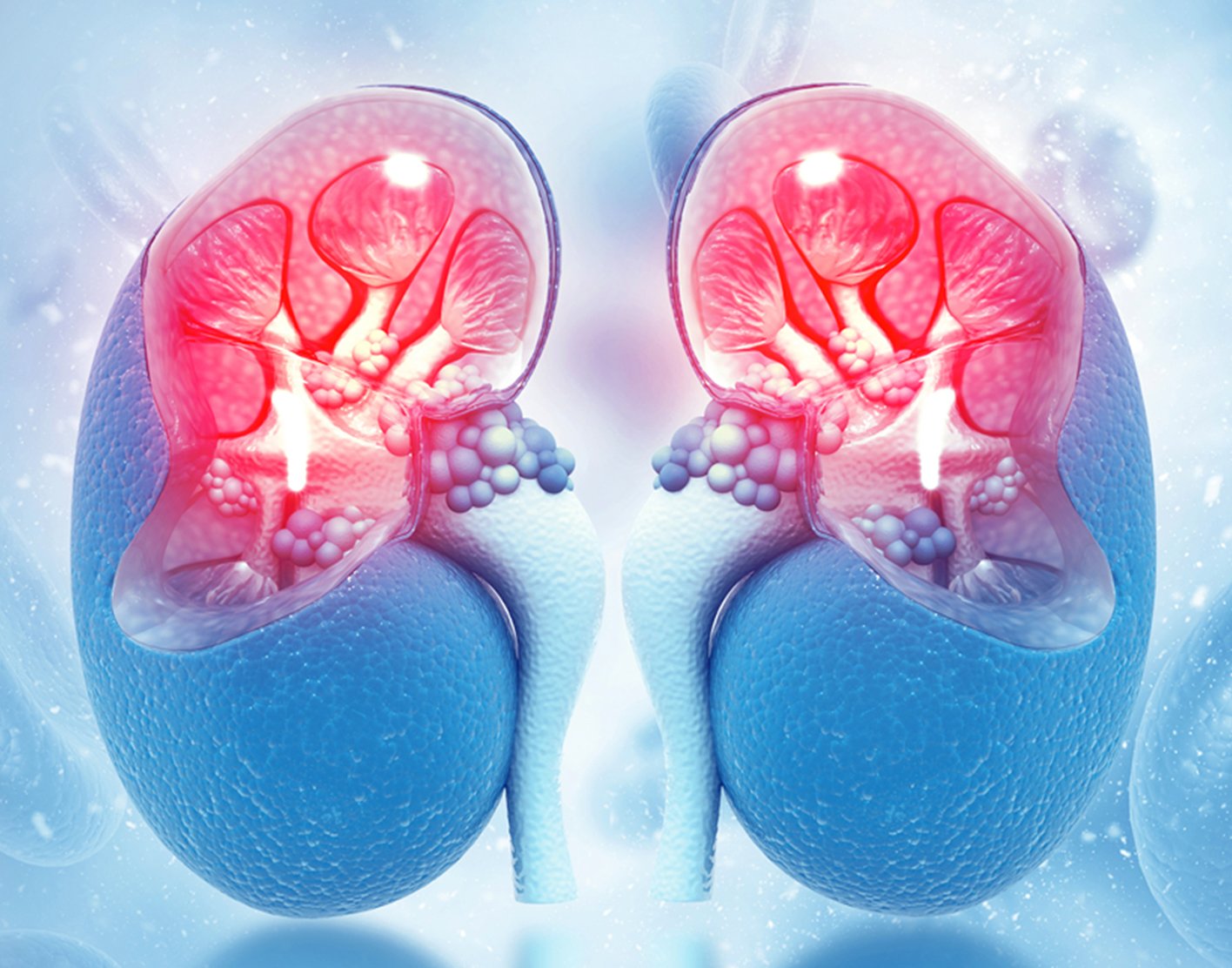
Renal venogram
Definition
A renal venogram is a test to look at the veins in the kidney. It uses
X-rays are a form of electromagnetic radiation like light, but of higher energy, so they can move through the body to form an image. Structures that are dense (such as bone) will appear white and air will be black. Other structures will be shades of gray.
Veins are not normally seen in an x-ray. That is why the special dye is needed. The dye highlights the veins so they show up better on x-rays.
Alternative Names
Venogram - renal; Venography; Venogram - kidney
How the Test is Performed
This test is done in a health care facility with special equipment. You will lie on an x-ray table. Local anesthetic is used to numb the area where the dye is injected. You may ask for a calming medicine (sedative) if you are anxious about the test.
The health care provider places a needle into a vein, most often in the groin, but occasionally in the neck. Next, a flexible tube, called a catheter (which is the width of the tip of a pen), is inserted into the groin and moved through the vein until it reaches the vein in the kidney. A blood sample may be taken from each kidney. The contrast dye flows through this tube. X-rays are taken as the dye moves through the kidney veins.
This procedure is monitored by fluoroscopy, a type of x-ray that creates images on a TV screen.
Once the images are taken, the catheter is removed and a bandage is placed over the wound.
How to Prepare for the Test
You will be told to avoid food and drinks for about 6 hours before the test. Your provider may tell you to stop taking aspirin or other blood thinners before the test. DO NOT stop taking any medicine without first talking to your provider.
You will be asked to wear hospital clothing and to sign a consent form for the procedure. You will need to remove any jewelry from the area that is being studied.
Tell the provider if you:
- Are pregnant
- Have allergies to any medicine, contrast dye, or
iodine - Have a history of bleeding problems
How the Test will Feel
You will lie flat on the x-ray table. There is often a cushion, but it is not as comfortable as a bed. You may feel a sting when the local anesthesia medicine is given. You will not feel the dye. You may feel some pressure and discomfort as the catheter is positioned. You may feel symptoms, such as flushing, when the dye is injected.
There may be mild tenderness and bruising at the site where the catheter was placed.
Why the Test is Performed
This test is not done very often anymore except in the treatment of varicose veins of the testicles or ovaries. Otherwise, it has largely been replaced by CT scan and MRI. In the past, the test was used to measure levels of kidney hormones.
Rarely, the test may be used to detect
Normal Results
There should not be any clots or tumors in the kidney vein. The dye should flow quickly through the vein and not back up to the testes or ovaries.
What Abnormal Results Mean
Abnormal results may be due to:
Blood clot that partially or completely blocks the vein Kidney tumor - Vein problem
Risks
Risks from this test may include:
- Allergic reaction to the contrast dye
- Bleeding
- Blood clots
- Injury to a vein
There is low-level radiation exposure. However, most experts feel that the risk of most x-rays is smaller than other risks we take every day. Pregnant women and children are more sensitive to the risks of the x-ray.
References
Bechara CF. Venography. In: Sidawy AN, Perler BA, eds. Rutherford's Vascular Surgery and Endovascular Therapy. 10th ed. Philadelphia, PA: Elsevier; 2023:chap 28.
Perico N, Remuzzi A, Remuzzi G. Pathophysiology of proteinuria. In: Yu ASL, Chertow GM, Luyckx VA, Marsden PA, Skorecki K, Taal MW, eds. Brenner and Rector's The Kidney. 11th ed. Philadelphia, PA: Elsevier; 2020:chap 30.
Wymer DTG, Wymer DC. Radiologic and nuclear imaging in nephrology. In: Johnson RJ, Floege J, Tonelli M, eds. Comprehensive Clinical Nephrology. 7th ed. Philadelphia, PA: Elsevier; 2024:chap 6.
Review Date: 29/01/2024
The information provided herein should not be used during any medical emergency or for the diagnosis or treatment of any medical condition. A licensed physician should be consulted for diagnosis and treatment of any and all medical conditions. Call 911 for all medical emergencies. Links to other sites are provided for information only -- they do not constitute endorsements of those other sites. Copyright ©2019 A.D.A.M., Inc., as modified by University of California San Francisco. Any duplication or distribution of the information contained herein is strictly prohibited.
Information developed by A.D.A.M., Inc. regarding tests and test results may not directly correspond with information provided by UCSF Health. Please discuss with your doctor any questions or concerns you may have.



























